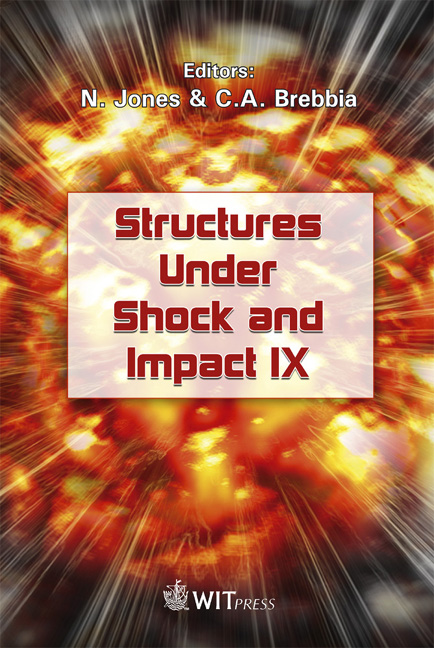Penetration Of A Coarse Sand Target By Rigid Projectiles
Price
Free (open access)
Transaction
Volume
87
Pages
10
Published
2006
Size
524 kb
Paper DOI
10.2495/SU060191
Copyright
WIT Press
Author(s)
M. D. Hankins, B. C. Stoltz, K. L. Torres & S. E. Jones
Abstract
This paper presents a theory for the normal rigid body penetration of particulate media. This theory consists of two separate force regimes divided by a critical velocity at which the transition between the two regimes takes place. Also included in this theory is sliding friction, separated into two different regimes, one for the nose and one for the shank. In order to verify this new penetration theory, a set of laboratory experiments was performed where 7075-T6 Aluminum projectiles were shot into coarse foundry sand. Utilizing the total penetration depth and impact velocity of each projectile in the test, along with known projectile geometry, analyses of the penetration events were completed. The results of these experiments and analyses, which confirm the required use of a friction coefficient on the shank, are reported. Keywords: penetration mechanics, particulate media, projectile, rigid penetrator, critical velocity, friction coefficient, sliding friction. 1 Introduction In two papers, Allen et al. [1, 2] presented a theory for rigid body penetration into a sand target. The theory was supported by an extensive experimental matrix. The results indicated a radical change in the nature of the force law decelerating the projectile below some critical velocity. The critical velocity was attributed to the sound speed in the sand, but this is still an open question. Later, Young [3] observed a similar trend in depth predictions for earthpenetrating projectiles in which a clear distinction was made for penetration
Keywords
penetration mechanics, particulate media, projectile, rigid penetrator, critical velocity, friction coefficient, sliding friction.





